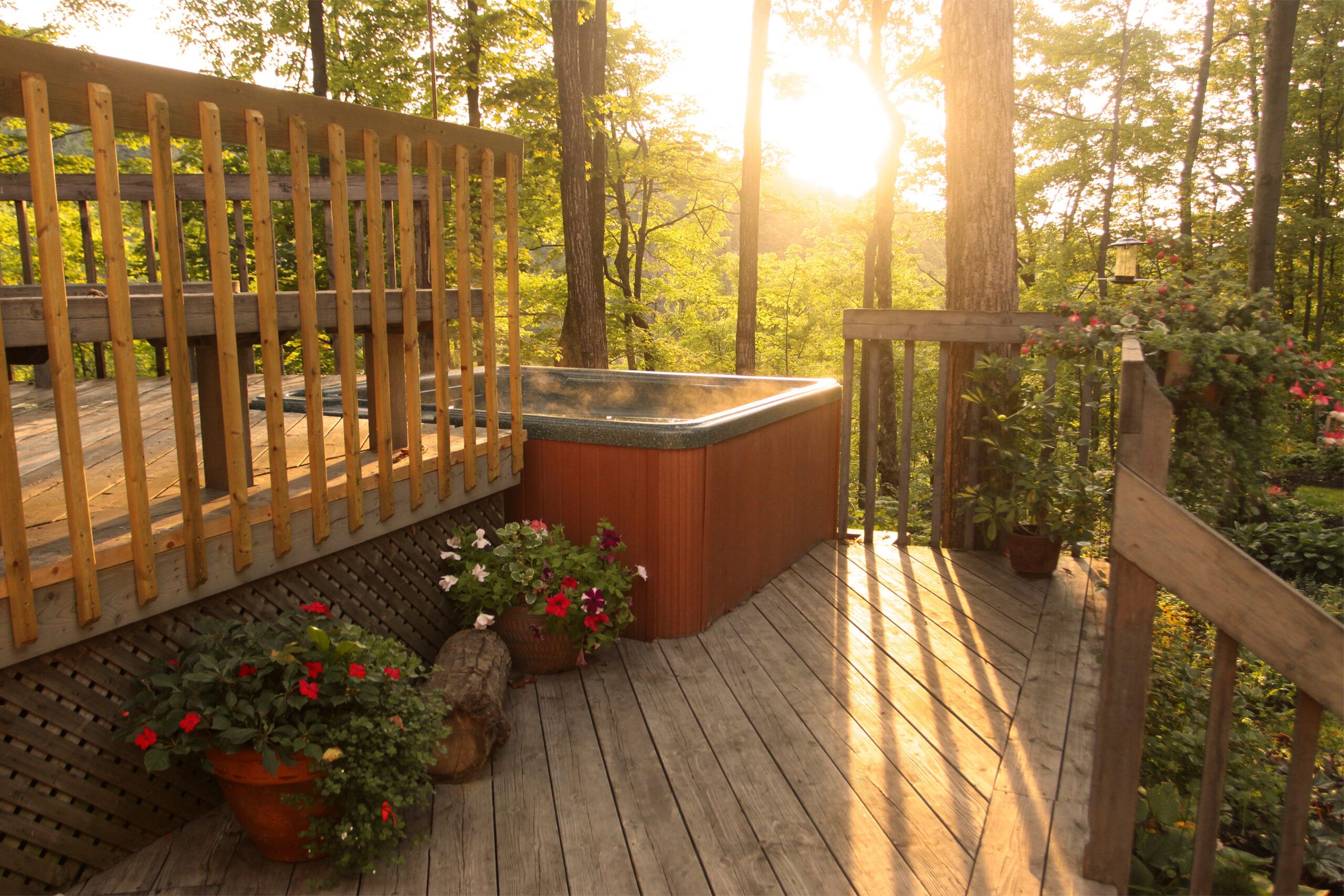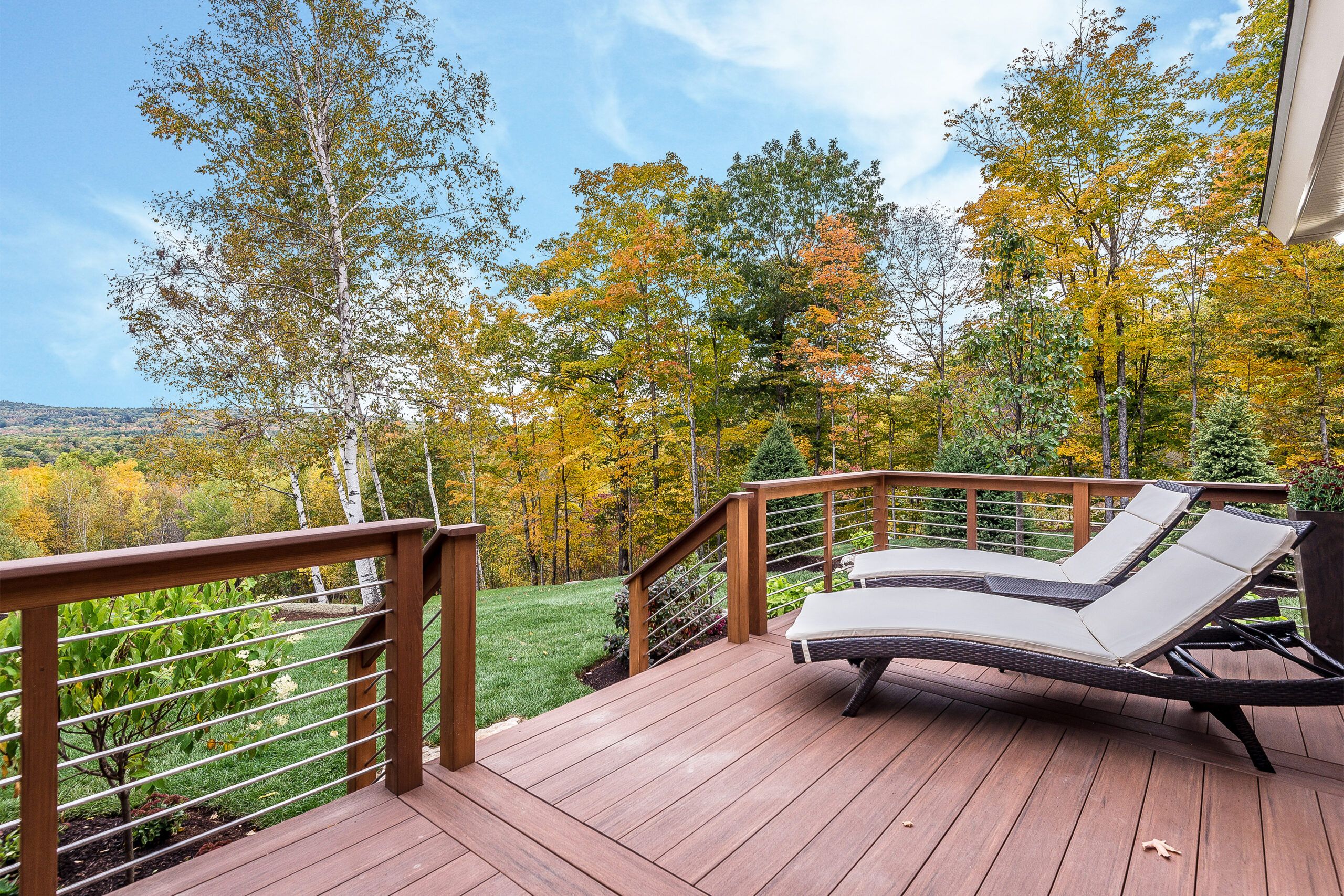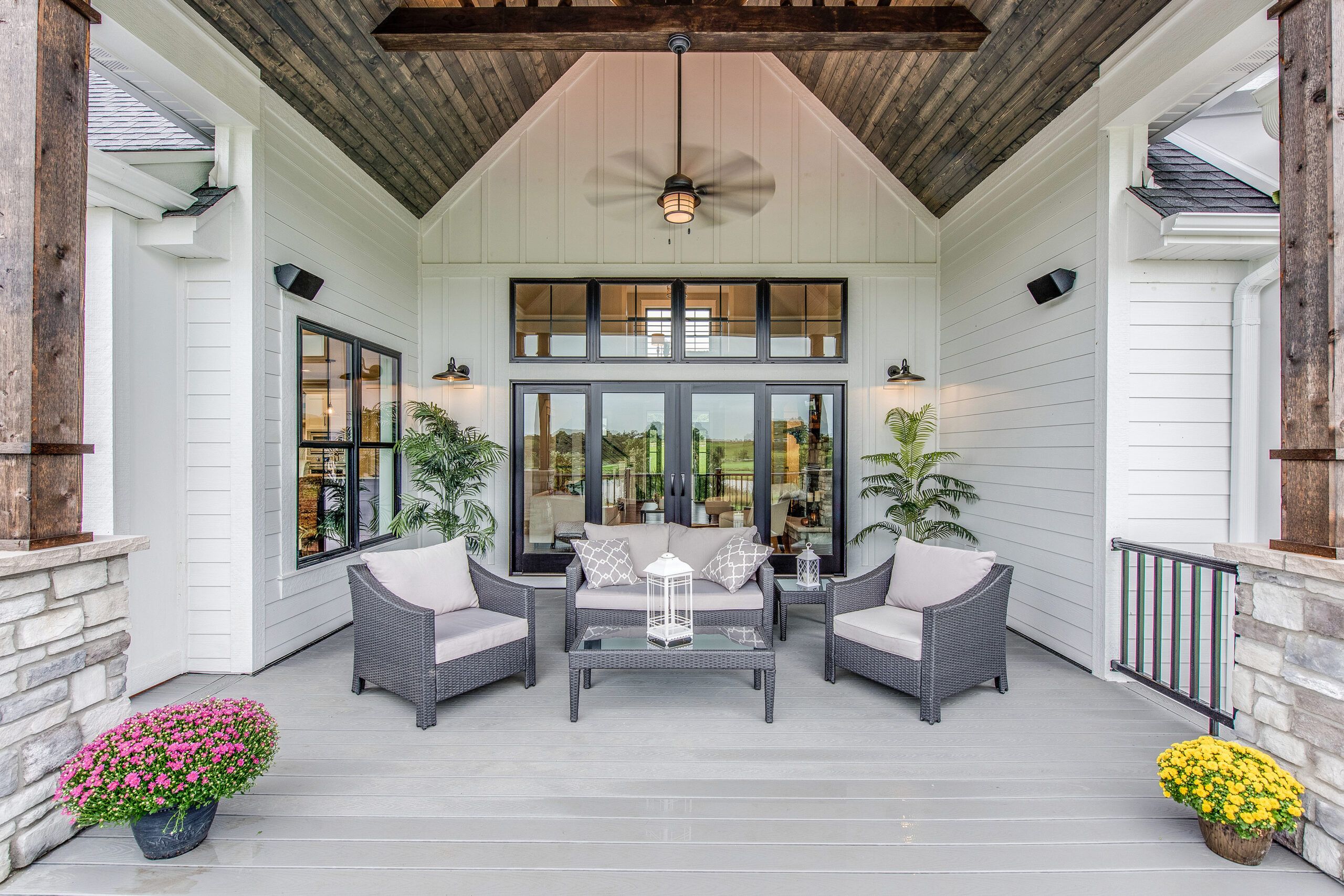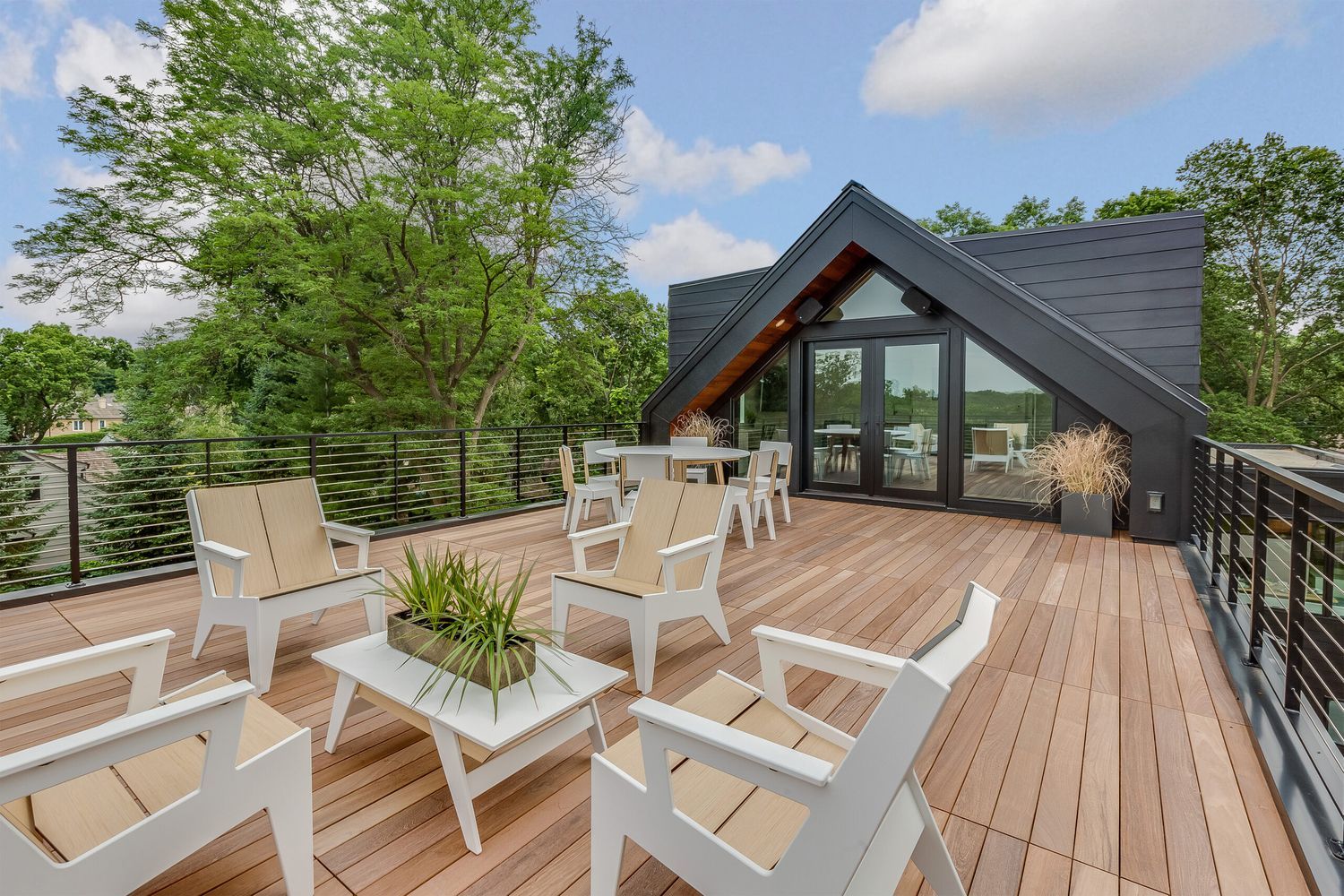Building a great deck takes some consideration. After all, this structure creates a space for relaxing, entertaining, and just general living. It’s also an expensive, labor-intensive structure to build, so it’s crucial to get it right the first time.
While everyone’s tastes and needs for a deck are different, this guide will highlight some of the most important considerations to keep in mind before building your deck. Hopefully, you’ll be able to avoid expensive mistakes and design flaws, allowing you to get the most use and enjoyment from your new deck.
Where to Start When Building a Deck
Establish your budget
The first consideration you need to iron out about your new deck is how much you’re willing to spend on it. Your budget will determine how big your deck can be, the materials you can use, and how intricate and deluxe your extra touches will be.
Once you know how much you’re willing to spend, reduce the amount by 10% to 20%. This new amount should be your budget and look at the 10% to 20% as your contingency fund. If something goes wrong and the project runs over budget, you’ll still be in a comfortable range since you were willing to spend that much, to begin with.
Determine the deck uses

Take a minute to think about how you plan to use your deck. For instance, using a deck for dining or grilling requires a whole different type of structure than a deck designed to hold a hot tub.
If your main goal is to host family meals, make sure your deck design allows plenty of room for a table and the necessary number of chairs. A general rule is to add 4 feet around the table so people can easily walk behind those who are sitting.
If the plan is to host cookouts and cocktail parties, you’ll need room for prepping food, serving, and the grill itself. Built-in seating around the deck could be a plus as well. Don’t forget a flat cap handrail for resting plates and beverages.
Be careful not to overload it
Most decks are designed to support 60 pounds per square foot, which includes the weight of the deck (called the “dead load”) as well as people and furniture (the “live load”). If you like to host big parties or want to add a hot tub or heavy planters, you’ll need to beef up your deck’s supporting structure for safety’s sake.
Beefing up the deck means adding wider joists, thicker posts, and sometimes even larger footings. In some cases, an engineer might even suggest a steel beam, depending on the size of the deck. Whatever the case may be, it’s important to ensure the deck is sturdy and safe to avoid a potential catastrophic failure.
Deck Layout, Design, and Location
Once you know how much you can spend and how you plan to use it, you can start thinking about your layout and design, and how the location in the yard and along the house will impact those two.
Layout
For layout, start by using stakes and a string line to create your deck’s footprint. This will give you an idea of how much space you have for your planned activities and how much yard space your deck will take up. It can also provide a guide for locating footings and other requirements. Move around within the string line, mimicking cooking, lounging, or other activities to make sure there’s enough space.
Design
Most decks are rectangular, but they don’t have to be. They can be round, triangular, or a mix of shapes. Some have stairs that enter the deck from the side or back, while others might have a stairwell in the center. Each deck is different. It’s also worth considering the decking pattern itself, which can be one (or more) of many styles, including:
- Single width: This standard deck style involves running boards side by side perpendicular to the joints.
- Basketweave: This is created by using short boards to form squares laid in alternating directions. Size the squares to your liking, and plan to add bridging between joists for extra support.
- Picture frame: Trim boards wrap around the field of single-width boards, forming a picture frame of sorts.
- Accent boards: Here, boards with opposing miters are inlaid into the rest of the field.
- Pinstripes: Single-width boards of wide and thin widths alternate along the deck to create a pinstriped look.
- Diagonal: The decking boards run diagonally across the joists.
- Herringbone: Herringbone decks are typically made of shorter boards with square ends (not mitered) with a zig-zag pattern.
Whatever the chosen design, be sure to leave gaps between the boards to allow water to drain through the boards rather than pool on top. Generally speaking, ⅛ to ¼-inch is typically enough, and many builders use nails or the tip of their speed square as a guide.
Location
Take the yard specifics into account
The yard itself may determine much of the deck’s design and layout. Sloped yards might be a good fit for a multi-level deck. Rather than using very tall posts, the design can step down a bit and create a whole new space. Or, for sunny decks, a built-in pergola that can provide some shade can be a major benefit. In yards with tall trees within the deck’s footprint, building around the tree will create a fun, incorporated design.
Also, give some thought to the neighborhood. If the neighbors will have a full view of your deck, consider a privacy wall. If the neighbors are loud, consider using the side closest to them for cooking and the far side for lounging.
Follow the rules and regulations
Regardless of the situation, you’ll need to adhere to your local rules and regulations. These may determine size limits, setback distances, and structural requirements such as how deep to dig your footings. If you live in an area where an HOA governs, you’ll need to meet color, size, and design requirements as well.
At any rate, you’ll need a permit. Be sure to get your design approved by your local building department and file for the correct permits.
More Considerings of Building a Deck

Structural safety
Your structure must be safe. While basic decks are relatively simple to design and engineer, larger structures with complex designs (even basic designs, if the deck is big enough) may require an engineer’s input. These design professionals will ensure that the structure is strong enough to handle anything a deck might face.
Also, mind the ledger. This weight-bearing board connects the deck to your house, and if it isn’t installed properly, your deck could collapse. It must be bolted, not nailed, to the house’s structure, and fully flashed to keep the wood from rotting.
Material choices
By understanding your budget and design, you can choose your decking materials with a bit more certainty that you can afford them. Basic pressure-treated lumber is the most affordable, but it can also be the least attractive. High-end materials like cedar and tropical hardwood look great, but they require regular maintenance. Composite and PVC might be low maintenance, but they’re not always so realistic looking.
| Species | Pros | Cons | Price |
| Pressure-treated | Easy to work with Stains and waterproofs easily | Corrodes some fasteners Can warp and crack over time | $ |
| Composite | Many colors and textures Won’t splinter, crack, or rot | Retains quite a bit of heat Slippery when wet | $$ |
| PVC | Moisture-resistant and stable Unaffected by rot and insects | Boards can squeak underfoot Not all products look natural | $$ |
| Cedar or redwood | Insect and rot resistant Easy to work with Weathers nicely | Not available everywhere Needs frequent maintenance and waterproofing | $$–$$$ |
| Tropical hardwood | Long-lasting if cared for Insect and rot resistant | Difficult to work with | $$$ |
Stairs and railings
Give thought to your stairs and railings, as these play a big part in your deck’s overall design and style. Choose a place for the stairs to exit the deck that flows with the design, and make sure it lands in a logical place with plenty of space for stepping on and off. Also, make sure there is enough structure under the stairs to keep the stairs from feeling bouncy.
Railings are important for many reasons, including safety and design. The railings should be a specific minimum height (usually 36 inches, but this might vary by area). Also, materials like metal, PVC, and wood are common, so choosing a design that works with the deck is important.
Personal touches

A deck can be a blank slate for personality and special touches. Let the style of your house and the furniture you choose influence the look of the fixtures you add and the way the woodwork is trimmed. Consider accents like post caps and base trim to dress up railing posts. Also, metal balusters can provide a luxe look.
Look to built-in lighting to provide some customized functionality, such as riser lights built into the stairs and lights around the railing that provide light for entertaining. Also, don’t overlook lattice, which can dress up the underside of the deck. This adds some style but also can provide hidden storage for decks that are high enough.
Deck finishes
If you’re using a natural material like pressure-treated, cedar, redwood, or a tropical hardwood, you’ll need to choose a deck finish. There are several types, including water-based and oil-based transparent, semi-transparent, semi-solid, solid, paints, and other types.
In general, the more solid the stain or finish, the better it will protect the wood. However, solid stains will completely block the beautiful grain of the more exotic species, so it’s not always ideal. Also, oil-based stains penetrate the wood better, protecting the wood from within, while water-based stains tend to sit on top of the wood and create a protective coating.
Care and maintenance
Like any other aspect of your home, you’ll need to care for and maintain your deck. This means annual cleaning, repairing any damage, and sealing the wood surfaces. Maintenance is best performed in the spring, when the deck can be prepared for frequent use all summer, but it should also be checked in the fall to ensure it’s ready for winter.
A pressure washer can be a big help with removing stains, mildew, and other undesirable blemishes. Just be sure to use a low-pressure setting and a wide nozzle to prevent gouging the wood and creating more damage.
For those who’d prefer a hands-off approach to maintenance, composite decking and railings are as close as you’ll be able to get. However, the substructure under the deck still needs sealing to protect it against water infiltration and insects.
Enjoy Your New Deck
Once your deck is complete, you’ll appreciate all the blood, sweat, and tears that went into saving for it and building it, making this outdoor space even more special to you. Be sure to invite everyone over, prepare a cookout, or simply lounge in the peace and quiet you created for yourself. You deserve it!

